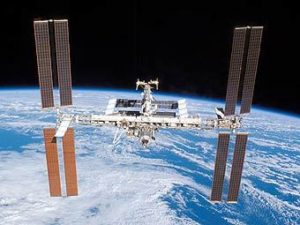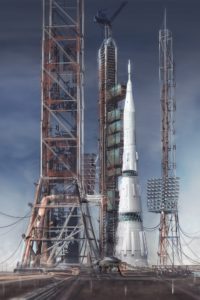TOPIC OF SITE

From the middle of the 19th century to the first half of the 20th century, in scientific and scientific-popular works (not to mention fantastic works) the projects of ships for interplanetary flights were actively discussed. It was then that the names of Konstantin Eduardovich Tsiolkovsky and Herman Ganswindt became known. Yury V. Kondratyuk (Alexander Ignatievich Shargey), Friedrich Arturovich Zander, German Obert, Robert Yesno-Peltri, Robert Goddard — those whom the founders and creators of real rocketry and cosmonautics, Mikhail Klavdievich Tikhonravov, Sergey Pavlovich Korolev began , Valentin Petrovich Glushko, Vladimir Nikolaevich Chelomey, Mikhail Kuzmich Yangel, Werner von Braun, were called by their teachers.

Mega rocket of USSA N-1.
The second half of the twentieth century was marked by a real breakthrough in space technology, which made it possible to start exploring near-earth space with automatic instruments and man, send reconnaissance to the planets of the solar system, research vehicles, explore the Earth from space, etc.
What’s next? How should astronautics develop? Where to walk, in what ways?
Many experts believe that further space exploration is impossible without the creation of space infrastructures. It will be necessary, so to speak, to «pull up the rears» into the Earth’s orbit. Apparently, we will have to go along the path of deploying «enterprises» in orbit, that is, complexes for the creation of large space structures, such as solar power plants, nuclear power plants, radio antennas, powerful means of Earth sounding, heavy interplanetary shuttles (they are often called reusable space transport tugs — MTKB), tourist complexes, etc. No less interesting and promising, as well, is the direction of repair and maintenance of large constellations of complex and expensive spacecraft deployed in near-earth orbit.
Already now, the tasks of servicing and repairing large satellites and elements of satellite constellations that are out of order or have used up fuel are becoming urgent. Inevitably, there will be a need to create service robotic complexes that should be based somewhere.
It’s time to settle in space. Without much exaggeration, we can say that the creation and development of near-Earth infrastructure, which provides assembly, preparation for operation, repair, maintenance and other necessary operations directly in near-earth orbit, will provide a decisive advantage in all spheres of space activity.
Astronautics is already transitioning to a new quality. Modern cosmonautics (and especially near-earth, orbital) ceases to be a state patrimony. In this area of human activity come private companies, corporations and individuals. This can not but rejoice, because in this is seen a pledge of its further development, which will depend not only on the political or military situation, but will also be determined by the real interests of humanity. Nowadays, it has become clear that only by joint efforts can we carry out those ambitious projects that we dreamed of, and for which great scientists and practitioners of the space industry have worked. They were confident that the path to space is the only possible for humanity, which will become more and more closely on the planet.
The materials used on the site are open sources, as well as proprietary materials of the company SPC SM at MSTU. N.E.Bauman. The main theme of the site is a brief overview of promising space technology in the context of creating possible technologies for assembly and service operations in Earth orbit.
It is strongly convinced that the development of astronautics should be based on the use of rich experience in performing various technological operations, promising developments of remote-controlled manipulators and robotic autonomous means acquired over the years of manned flights to create a specialized space station (or even stations) that provide after-sales service, repair and assembly operations directly in orbit.



